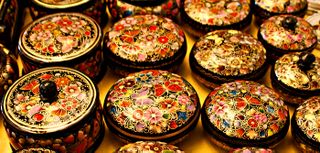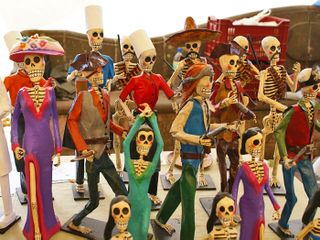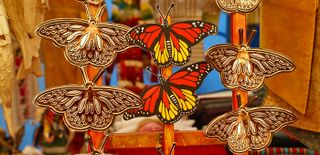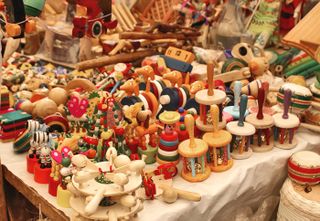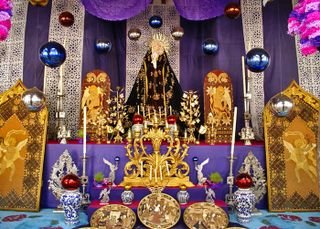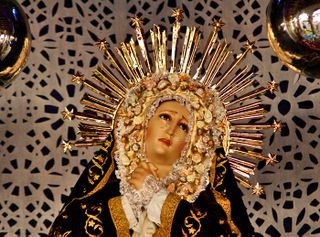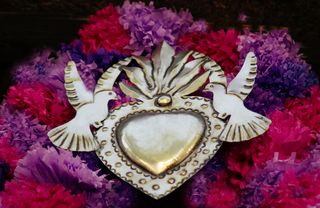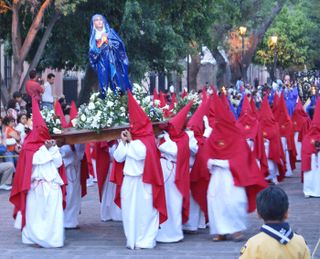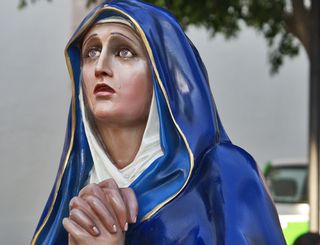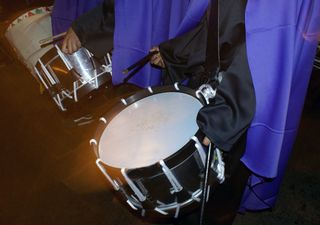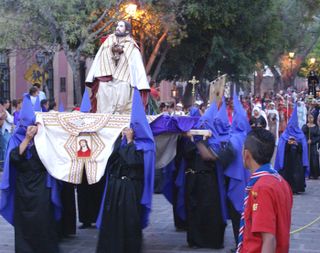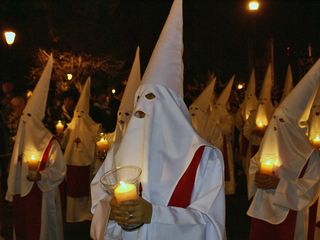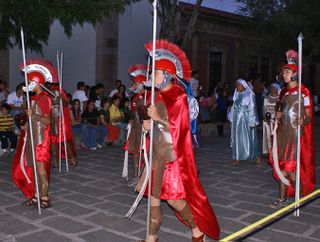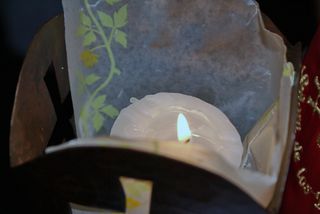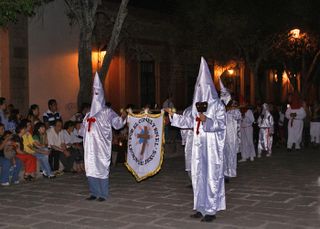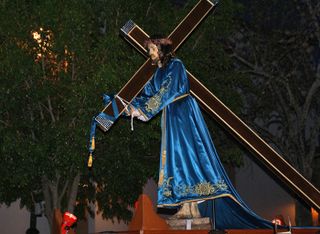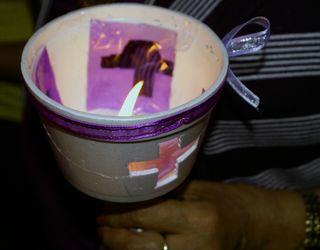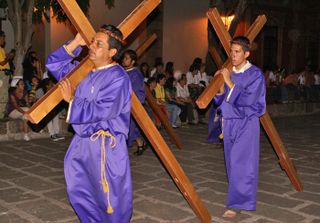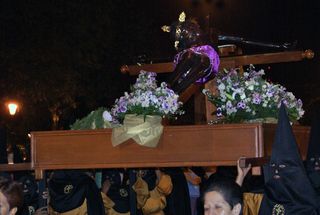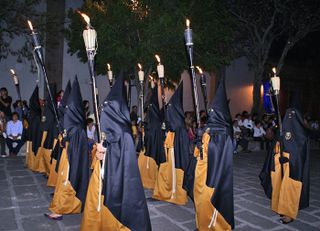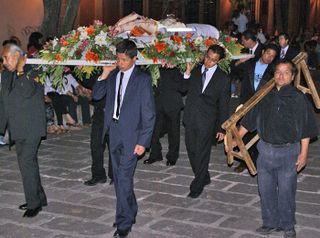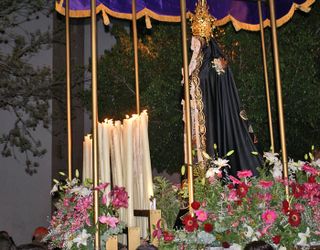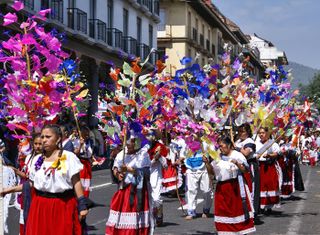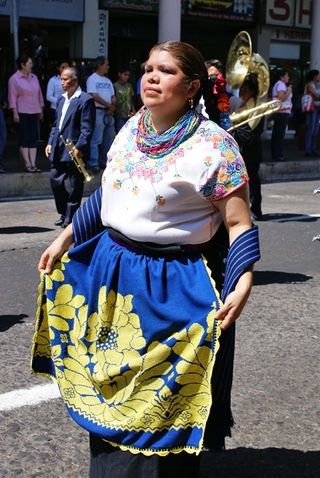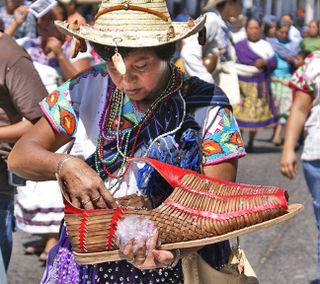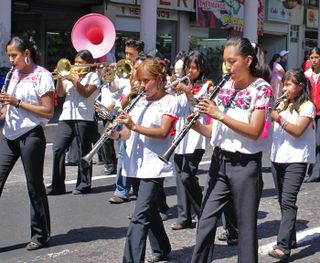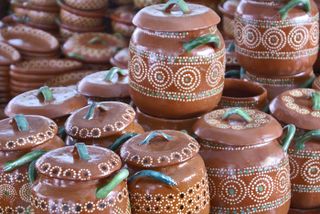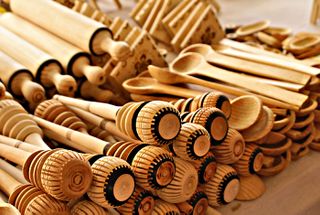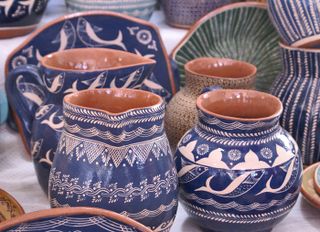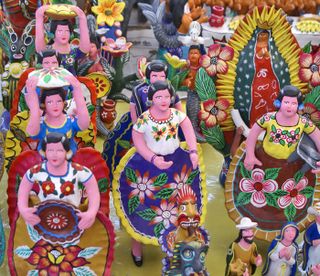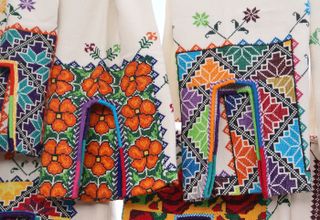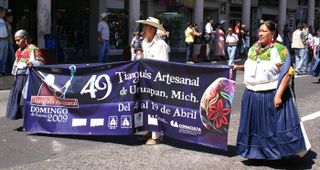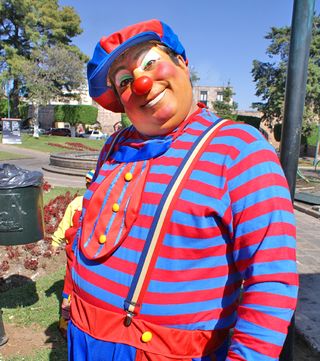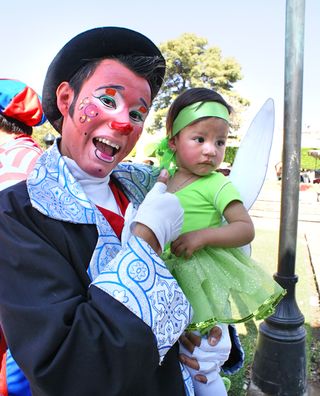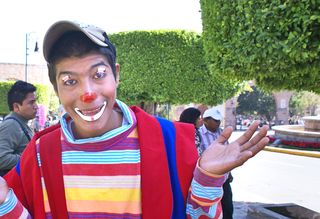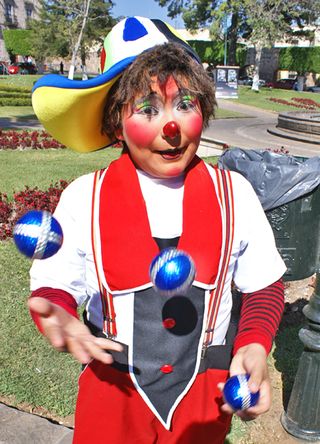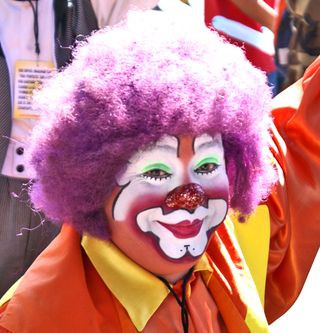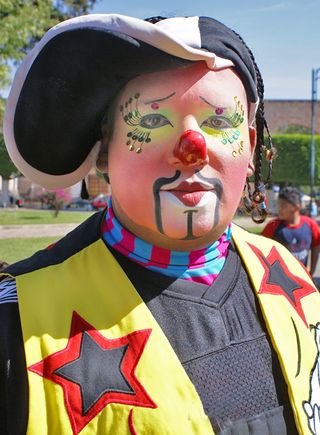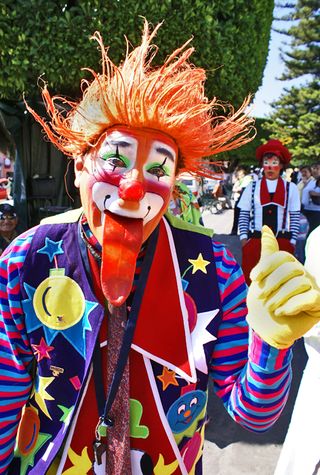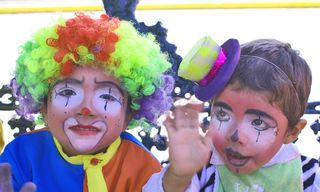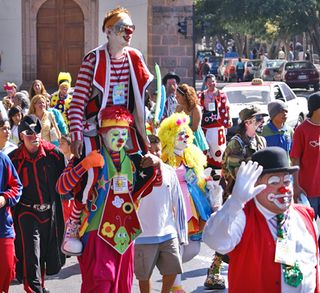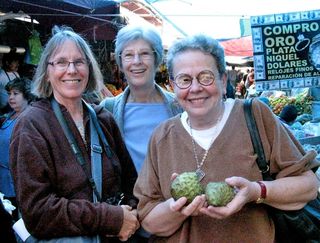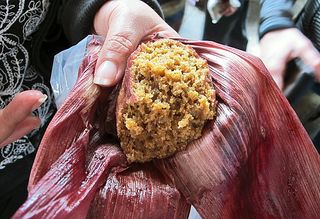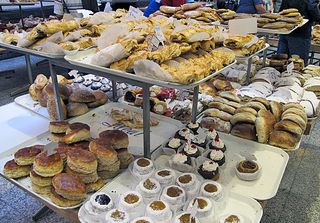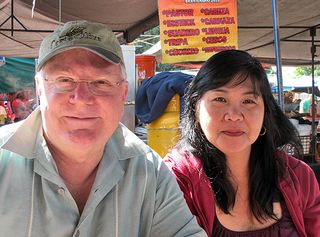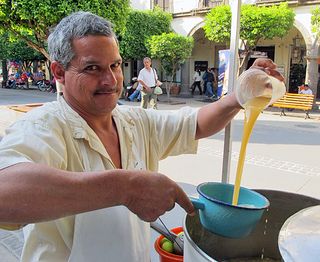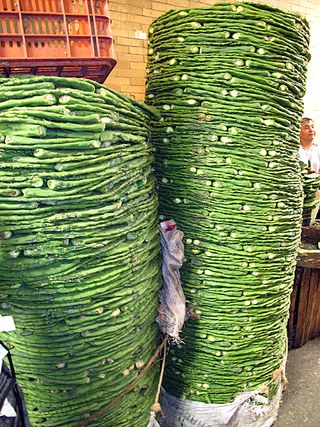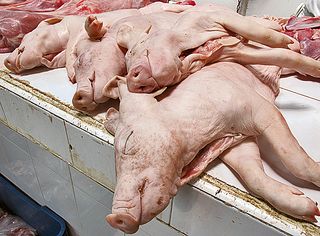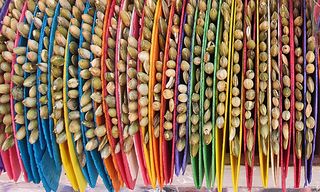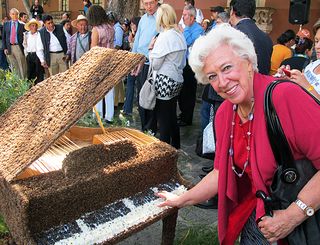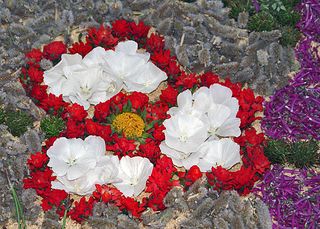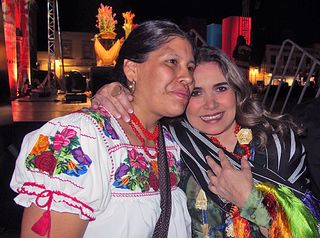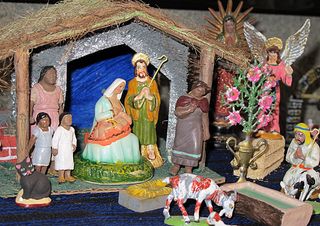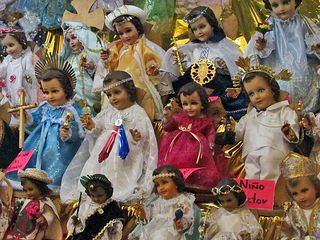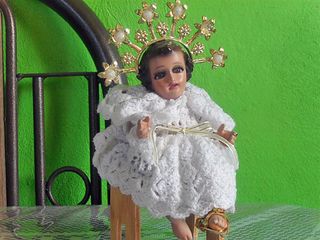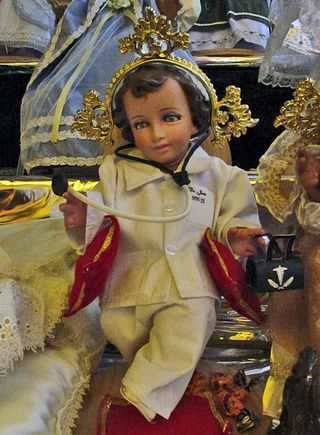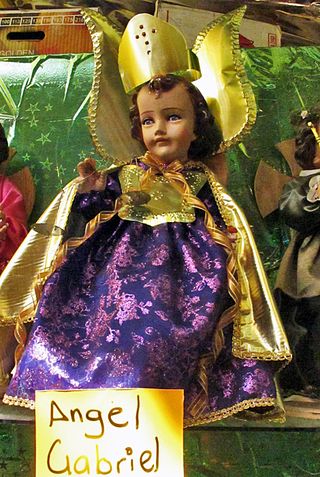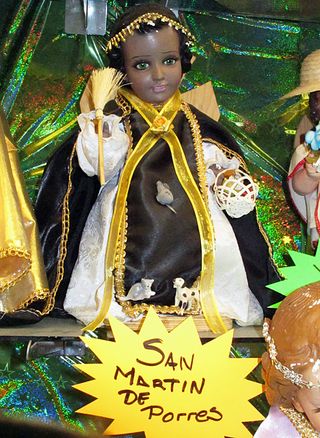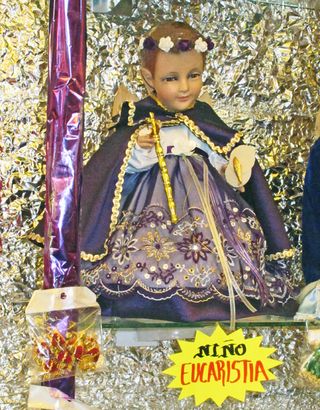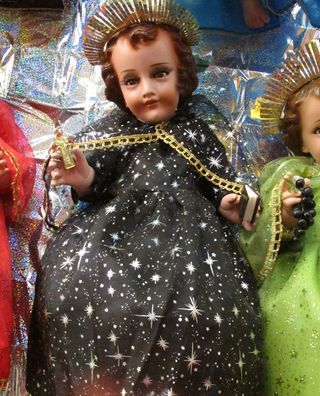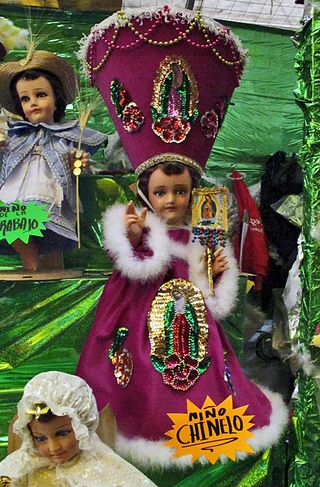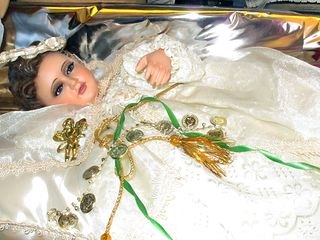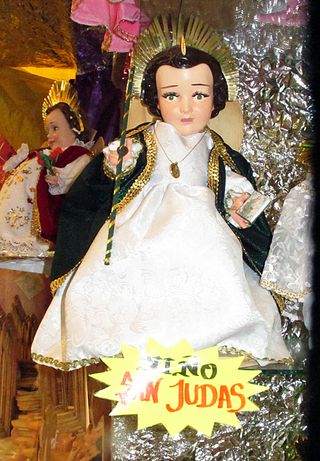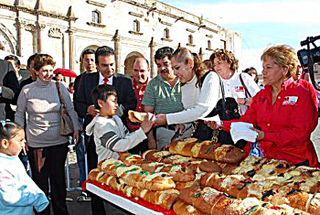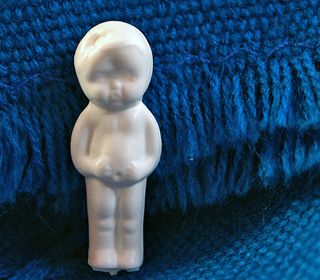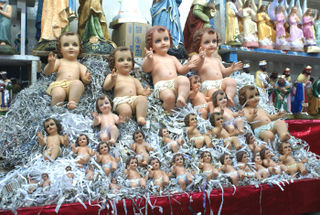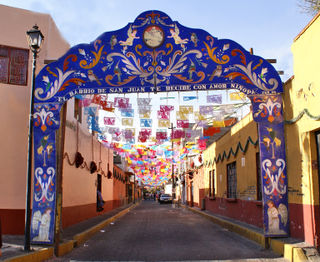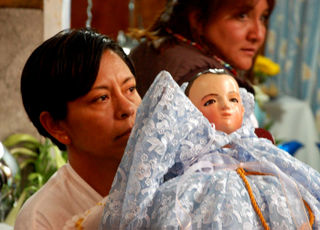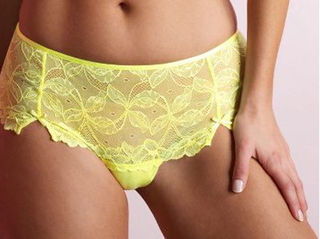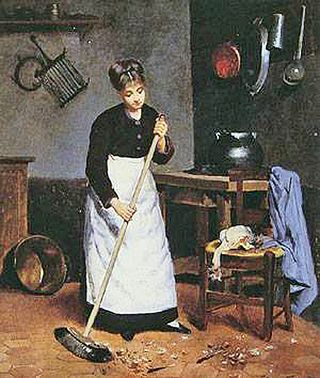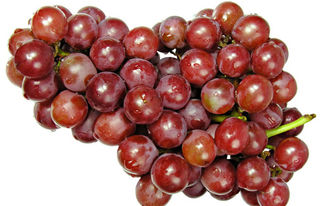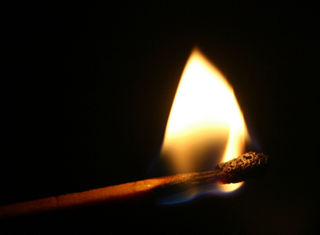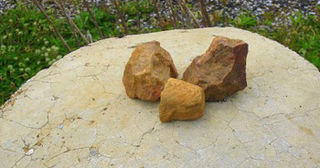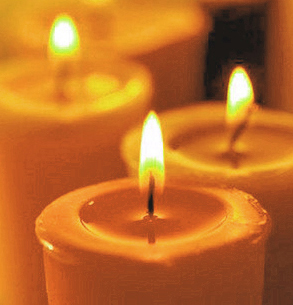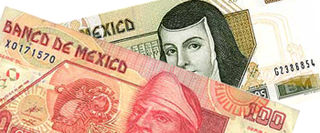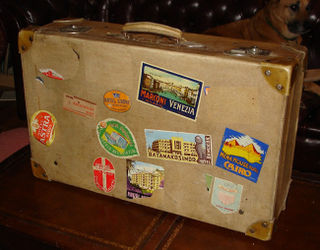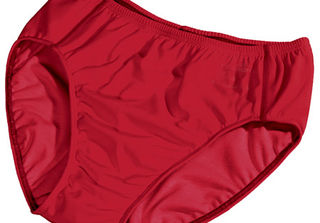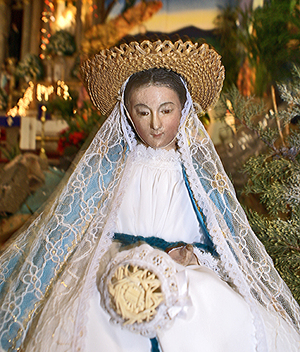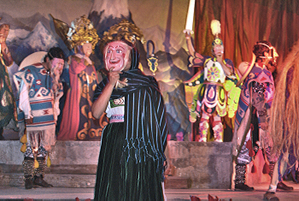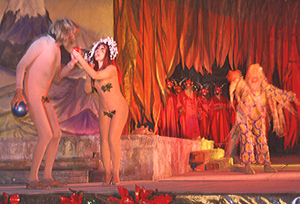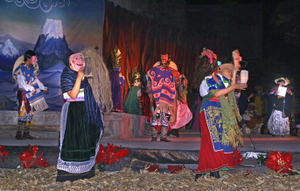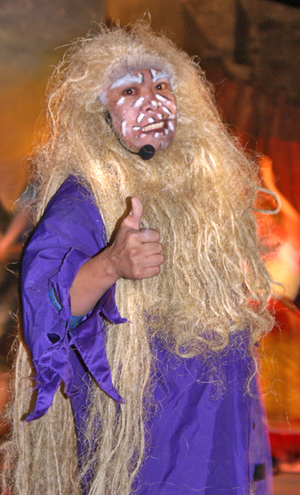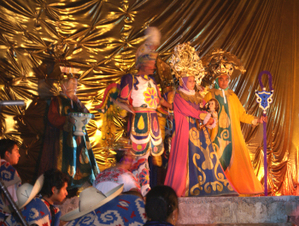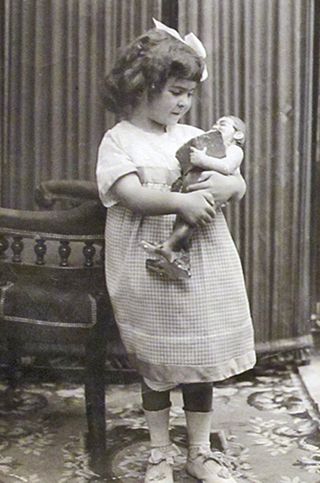
Magdalena Carmen Frida Kahlo y Calderón, age three or four, and friend. Photo by her father, Guillermo Kahlo.
Which is the Frida Kahlo who most touches your imagination? The innocent toddler in her beribboned shoes?
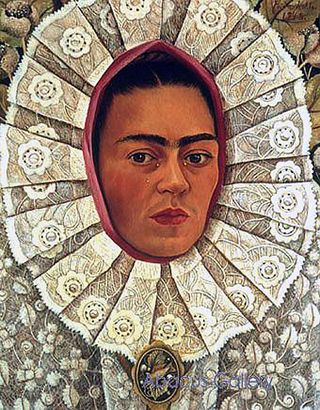
The iconic self-portrait dressed as a Tehuana (woman from Oaxaca's Isthmus of Tehuantepec)?
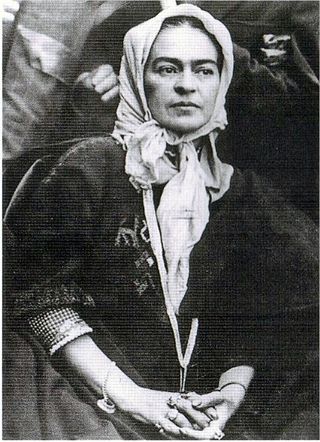
The pain-wracked, alcoholic, drug-addicted, unadorned, exhausted Frida? This photo was taken on July 2, 1954, at her last public appearance. She (in her wheelchair), Diego Rivera, and a group of friends and colleagues marched in Mexico City to protest the involvement of the United States Central Intelligence Agency in the overthrow of Guatemala's president. Frida Kahlo died on July 13, 1954.
There was a time, and not too long ago, when I thought I understood the moments that these photos purport to reveal. Photos and self-portraits are a record of life, just as black-and-white as the first and last of these three. Except–perhaps not. Perhaps, as the on-going exhibit at Casa Museo Frida Kahlo is titled, las apariencias engañan. Appearances deceive. What we see is tricky. Appearances are as fluid as blood in the veins, as liquor down the throat, as dye seeking fabric, as paint on a palette. And as Anais Nin is alleged to have said, "We do not see things as they are. We see things as we are."

The original drawing used for the exhibit poster is part of Frida Kahlo's diary.
When Frida Kahlo died, Diego Rivera insisted that the places in her home where the majority of her personal effects were stored (two bathrooms, some trunks and closets) be sealed for the following 50 years. In 2004, under the close supervision of museum directors, workers knocked down bathroom walls and pried open long-locked doors. They found literally thousands of items belonging to the couple, including more than 300 of Frida Kahlo's dresses, some of her jewelry, some hair ornaments, shoes, and orthopedic appliances.
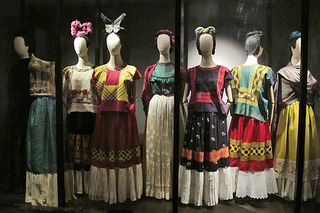
A few of the Oaxaca-style skirts and huipiles (blouses) from Frida Kahlo's closets and trunks, currently showing in Room 2 of the exhibit space. If you are familiar with her paintings, you may recognize one or two.

Detail of encaje (lace) and other fabrics from the skirts shown second and third from the right in the above photo.
Las Apariencias Engañan opened in late November 2012. According to museum personnel, the exhibit will be on display for approximately one year, during which time the mannequins' clothing will be changed every three to four months. Not only will these changes give the public an opportunity to see more of the 300 dresses found when the walls were knocked down, but long-stored delicate fabrics will not be subjected to the stress of their own weight as they are displayed.
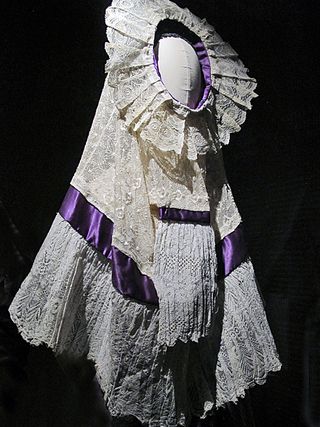
The Tehuana headdress from the self portrait shown above. Click on any photograph to enlarge it for a better view.
The restoration period has lasted nearly eight years. Despite the conditions under which Frida's clothing and other belongings were stored for 50 years, what we see is a marvel of both natural preservation and expert resurrection. The mounting of the exhibit, supervised by curator Circe Henestrosa and mounted by prominent British architect and designer Doctor Judith Clark, stuns with its mix of the lovely, the grotesque, and the matter-of-fact.

You may well be familiar with some of Frida's famous hand-painted plaster of Paris corsets, decorated with her fabled fantastical flowers, animals, and even the Communist hammer and sickle. They are beautiful. About five years ago, the museum's exhibit of the artist's night bedroom included both her death mask, wrapped in a rebozo, and a plaster of Paris corset.
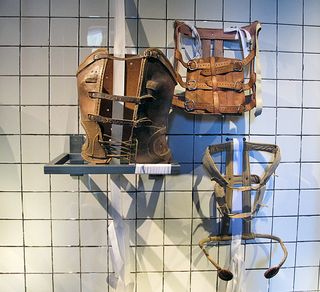
These three corsets suspended (by white ribbons meant to evoke bandages) from white-tile walls that are symbolic of the bathrooms where the items were found, are not beautiful to any eye. They are what they are: early 20th century medical appliances meant to bind, to support, and inevitably to inflict pain on the wearer.
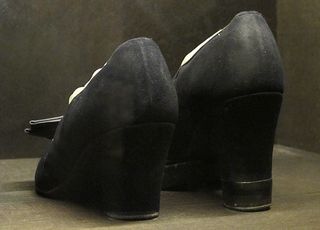
A pair of Frida's black suede shoes. Srta. Maricarmen Rodríguez López, my personal guide to the exhibit, said, "People ask why Dr. Clark insisted that we mount these shoes showing the back rather than the pretty front with bows on the toes. Look closer. The right shoe has an elevated heel to compensate for the shortness of Frida's right leg." Srta. Rodríguez also mentioned that the entire exhibit is designed to emphasize the disabilities that Frida suffered from the time she was a child of six, when she had polio which left her right leg thinner and shorter than the left.
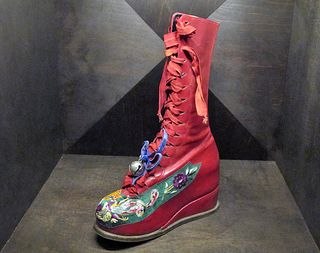
Frida's calf-high, crimson leather lace-up boot–the left boot, with its wedge heel, decorated with panels of Chinese embroidery and a bell on a ribbon (…rings on her fingers, bells on her toes…).

The right boot and prosthesis, quite literally the other side of the story. Compare the wedge heel on this boot with the wedge on the other. Due to gangrene, doctors were forced to amputate Frida's long-injured right leg in 1953.
The metal supports for this and other items in the exhibit symbolize the iron handrail that pierced her abdomen and uterus in the 1925 trolley-car accident in which she suffered other serious injuries: a broken spinal column, a broken collarbone, broken ribs, a broken pelvis,
eleven fractures in her right leg, a crushed and dislocated right foot,
and a dislocated shoulder.
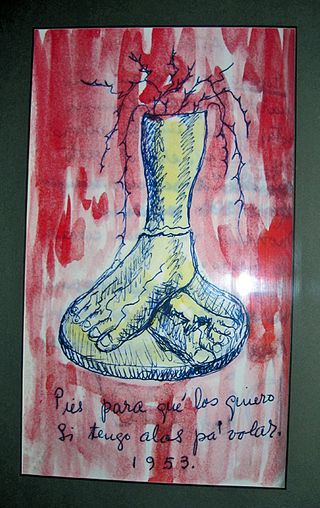
Arguably the most famous page from Frida's diary: Pies para qué los quiero si tengo alas pa'volar. (Feet, what do I need them for, if I have wings to fly.) Dated 1953 and painted just prior to the amputation of her right foot.

From Frida's trunks, a hair ornament. The tiara includes aluminum and textile flowers and green linen leaves.
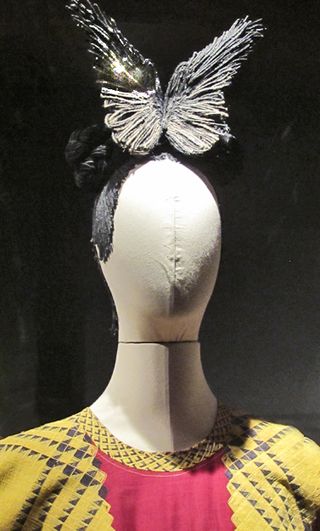
Another hair ornament, in the form of a butterfly.
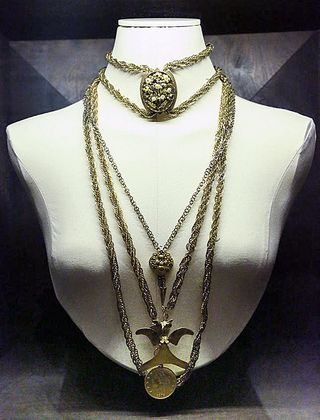
Gold chokers and other necklaces.

Who will see my brokenness, when the glory of my wardrobe hides my pain? In the exhibit, even the limbs of the mannequins resemble prostheses.
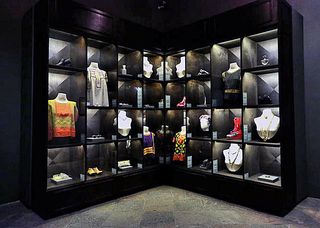
A full cabinet of Frida's long-stored belongings: clothing, jewelry, shoes, even a pair of golden cat's-eye sunglasses came from the closets and trunks.
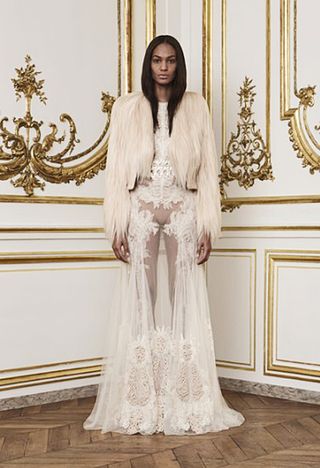
Las Apariencias Engañan is intended to be a revolving, year-long exhibit. Sponsored in large part by Vogue Magazine, as well as BMW, The Anglo Mexican Foundation, British Airways, The BBVA Bancomer Foundation, the Japan Foundation, Lasalle College of the Arts, Montblanc, the University of the Arts London, and Valentino Parfums, the exhibit also includes a roomful of newly created items of haute couture based very loosely on Frida's wardrobe. This dress and jacket are by GQ's 2012 Designer of the Year Riccardo Tisci of Givenchy. Still more designer dresses are by Costume National and Jason Wu, among the other couture houses involved in the show.
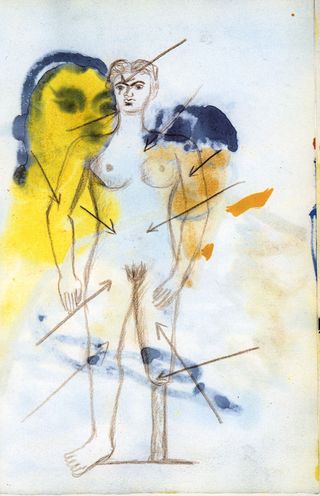
From Frida's diary: arrows point to all of the parts of her body where she had surgeries. A tear falls from her right eye. I asked Srta. Rodríguez, "But she never had surgery on her head…?" "No, la flecha esa simboliza el daño psicológico…" ('No, that arrow represents the psychological damage.') Although the drawing shows only a few arrows, Frida actually had 22 or more surgeries.
Frida Kahlo chose her very Mexican wardrobe with extreme care. Each item was
designed to flatter this part, cover that part, hide the other part.
Under her embroidered and boldly colorful square-cut huipiles
(in this instance, Oaxaca-style blouses), terrible leather-and-metal
corsets were barely noticable to others. A maimed foot, a withered leg, a missing
leg? Let the boots take center stage, let the lace-bordered skirts be a
frothy smoke screen. Don't attend to my limp, look at the wreath of flowers in
my hair. Pay no attention to this wheelchair, raise your eyes to my multiple
gold necklaces, the bracelets on my arms, the rings on my fingers.
The exhibit reveals in a way that a photo, an article online, or a
biography cannot show how and why Frida Kahlo invented the appearance of festive
health for herself. The psychology that moved her to create this way
of life and this wardrobe, the fractures (both physical and mental) that shaped her need
for window dressing: all is apparent in the exhibit, and we see both the color and the shadow, the harsh reality and the fugue of fashion. Frida stands naked before us, a human being rather than a souvenir. ___________________________________________________
With profound thanks to Hilda Trujillo Soto (Directora Casa Museo Frida Kahlo), Patricia Cordero (Coordinadora de Difusión y Contenidos Digitales, Casa Museo Frida Kahlo), and Maricarmen Rodríguez López (Redes Sociales y Difusión, Casa Museo Frida Kahlo) for their time and effort in arranging a private guided tour of Las Aparencias Engañan for Mexico Cooks!.
Looking for a tailored-to-your-interests specialized tour in Mexico? Click here: Tours.

